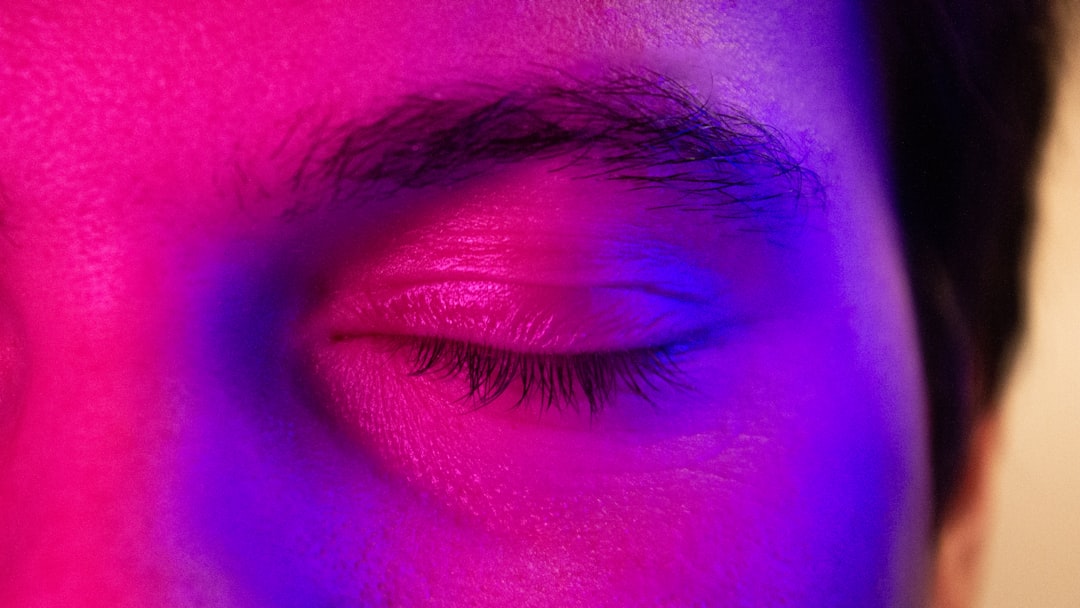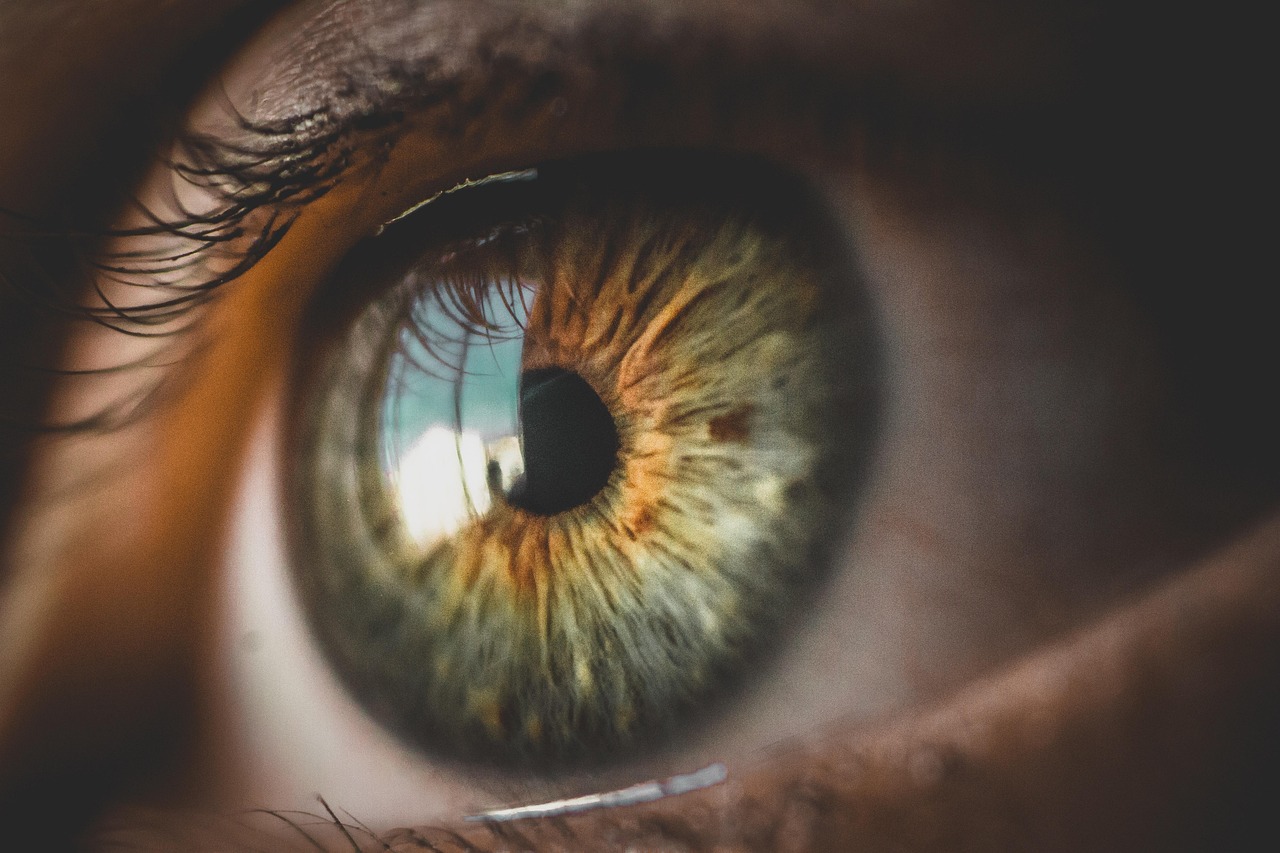You might think the world of color is the same for everyone. Yet nestled among us are individuals with an almost mystical ability to perceive colors beyond the reach of ordinary human vision. These rare people aren’t just seeing things differently, they’re literally seeing more.
Tetrachromacy is a type of color vision that allows some people to see colors others cannot, with those who are tetrachromatic potentially able to perceive up to 100 million color variations. With normal color vision, humans can see approximately one million different colors. Let’s dive into this fascinating world of superhuman color perception.
The Science Behind Four-Cone Vision

Tetrachromacy is a condition that results when an additional type of color receptor cell is present in the eye. When tetrachromacy is present, there is a fourth category of cones in the retina. This extra group of cone cells is thought to allow the perception of a fourth color dimension.
The retina is at the back of the eye and is the part responsible for forming images from visual signals. Your retina contains two types of light-detecting cells: rods and cones. Your cones are responsible for color vision and perceive either red, green or blue shades. Our powers of color vision derive from cells in our eyes called cones, three types in all, each triggered by different wavelengths of light. Every moment our eyes are open, those three flavors of cone fire off messages to the brain. The brain then combines the signals to produce the sensation we call color.
Vision is complex, but the calculus of color is strangely simple: Each cone confers the ability to distinguish around a hundred shades, so the total number of combinations is at least 100^3, or a million. Take one cone away – go from being what scientists call a trichromat to a dichromat – and the number of possible combinations drops a factor of 100, to 10,000.
The Genetic Mystery of Tetrachromacy

Tetrachromacy is a rare genetic phenomenon that is believed to only affect females. Tetrachromacy is caused by a genetic mutation on this chromosome. Females have two X chromosomes (one inherited from the mother and one from the father). It occurs as a result of a genetic mutation and can only occur in women. This is because the gene for our red and green cone types is on the X chromosome (women have two X chromosomes, while men have one X chromosome and one Y chromosome).
An estimated 2-3% of women worldwide may have the genetic basis for tetrachromacy. However, it is estimated that women with four cone types may make up 2-3% of the female population, but it is not known what factors come into play for someone to become functionally tetrachromatic, as most four-coned women aren’t. The genetic potential is there, but it takes more than just having the right genes.
Think of it like having the perfect ingredients for a remarkable dish. Simply possessing them doesn’t guarantee the masterpiece will emerge without the right environment and practice.
Historical Discovery and Research

The idea of some women being tetrachromatic first originated in 1948 by Dutch scientist (H. L.) de Vries. His hypothesis focused on the inherited factors of this condition. De Vries speculated tetrachromatic women were daughters of people with anomalous trichromacy.
In the 1980s neuroscientist John Mollon of Cambridge University, then Jordan’s adviser there, was studying color vision in monkeys and became interested in De Vries’s note on tetrachromacy. Mollon and Jordan realized that since color blindness is common, four-coned women must be as well. Jordan estimates they make up as many as 12 percent of women. To find if tetrachromats were hidden in this group, the researchers sought out the mothers of color-blind sons and had them take matching tests similar to the one used by De Vries, but with a twist. If they were true tetrachromats, they would never be able to make a satisfactory match, because they would be able to sense color gradations beyond those available on the test. No luck: Mollon and Jordan found that women with four cones could consistently make a match on the tests.
The early disappointments nearly derailed the search entirely. Research requires tremendous persistence when you’re hunting for something that might not even exist.
The First Confirmed Tetrachromat: cDa29

After twenty years’ study of women with four types of cones (non-functional tetrachromats), neuroscientist Gabriele Jordan identified a woman (subject ‘cDa29’) who could detect a greater variety of colors than trichromats could, corresponding with a functional or “true” tetrachromat. A doctor living in northern England, referred to only as cDa29 in the literature, is the first tetrachromat known to science.
Neuroscientist Gabriele Jordan from Newcastle University in the UK, who had formerly worked alongside Mollon, decided to try a slightly different test to look for this super-vision. She took 25 women who had a fourth type of cone cell, and put them in a dark room. Looking into a light device, three coloured circles of light flashed before these women’s eyes. To a trichromat, they all looked the same, but Jordan hypothesised that a true tetrachromat would be able to tell them apart thanks to the extra subtlety afforded to her by her fourth cone. Incredibly, one of the women tested, cDa29, was able to differentiate the three different coloured circles in every single test. “I was jumping up and down,” Jordan told Veronique Greenwood from Discover magazine.
Imagine the moment of discovery after twenty years of searching. It must have felt like finding a needle in a haystack, only to discover the needle was made of diamond.
The Artistic World of Concetta Antico

Concetta Antico is an artist with tetrachromacy. Having super color vision has enhanced her artwork in several ways. Being a tetrachromat allows her to use color in a manner that makes her work more dynamic. Concetta Antico is an Australian born, critically acclaimed artist, best known for her signature use of vibrant color and impressionist scenes. Concetta Antico is an Australian born, critically acclaimed artist, best known for her signature use of vibrant color and impressionist scenes. Painting since the age of five, her work has been chronicled extensively and has attracted a large audience worldwide.
Concetta’s ability to perceive and express otherworldly colors through painting is the result of an extremely rare condition known by the scientific term Tetrachromacy. At this time Concetta is the world’s only known Tetrachromatic artist, making her paintings highly collectible and rare. I was only discovered recently, in 2012. Prior to that time I was as green as anyone else about what tetrachromacy even means. Learning that I see color differently made me reflect back on my life.
Simply put by artist Concetta Antico, “I see colours in other colours… other people might just see white light, but I see orange and yellow and pink and green… so white is not white; white is all varieties of white”. She likens the condition to a “more intense” version of seeing all the colours on a paint chart which, at times, can be quite overwhelming.
Testing and Confirming Super Vision

Certain tests may help determine if a person is tetrachromatic, although genetic testing is the only conclusive test. A key tool that researchers use to test for tetrachromacy is DNA testing. Researchers know which genes control how cones in your eyes work. That also means they know where to look for mutations and a few specific mutations that are the most likely cause.
But DNA testing alone isn’t enough to confirm if you have tetrachromacy. It also takes highly specialized, expensive hardware to do it. Testing also needs to happen in environments where lighting won’t throw off the results. This usually happens at research centers and hospitals that are part of or partnered with universities. These might involve giving the individual a series of separate but similar colors. They would then rate the degree of similarity on a particular scale. This approach may help determine how sensitive a person is to seeing differences in similar shades of color.
Honestly, the testing process seems almost as complex as the condition itself. Scientists need to be absolutely certain before declaring someone has this remarkable ability.
Why Most Tetrachromats Never Know It

Jay Neitz, a vision researcher at the University of Washington, thinks that potential tetrachromats may need practice to awaken their abilities. “Most of the things that we see as coloured are manufactured by people who are trying to make colours that work for trichromats,” he says. “It could be that our whole world is tuned to the world of the trichromat.” He also suspects the natural world may not have enough variation in colour for the brain to learn to use a fourth cone, meaning tetrachromats might never need to draw on their full capacity.
But the bigger issue that Jordan thinks most true tetrachromats would never need to use their fourth cone cell type, and so would never realise they had special vision. “We now know tetrachromacy exists,” she told Greenwood. “But we don’t know what allows someone to become functionally tetrachromatic, when most four-coned women aren’t.”
It’s like owning a high-performance sports car but never driving it on anything other than residential streets. The capability remains dormant without the right conditions to flourish.
The Overwhelming Experience of Enhanced Color

The fact is that I’m sitting here and all I can do is stare at all the colors. I’m captivated by color on a moment-by-moment basis. It completely distracts and fascinates me, it’s part of my daily fare, I can’t get away from it. It’s in everything I look at. Unless I’m sleeping, it’s there and it’s speaking very clearly to me.
When someone with 3 receptors looks at a shadow, they see a few shades of grey. When I look, I see hundreds of greys. Looking at a red rose, I see shades of red, bits of green, lilac, yellow, orange and more. Places which have lots of colours close together, such as supermarkets or clothes shops, can also be rather intense environments for tetrachromats.
The sensory overload must be comparable to having superhuman hearing in a world designed for normal ears. Every surface becomes a symphony of color variations that others simply cannot perceive.
Potential Benefits Beyond Art

There is also speculation that being tetrachromatic may allow some people to see subtle changes in skin color. This could be beneficial in detecting concerns that may indicate disease or other health issues. On the basis of anecdotal evidence we have speculated that there may be signals in the skin tone of conspecifics that are linked to health or disease. In such cases early detection will be advantageous.
Tetrachromacy may also enhance vision in dim lighting, or in looking at a screen. One advantage provided by this extra cone class appears to be an enhancement of color in shadow and in dim lighting. Still, we do not yet know whether functional tetrachromacy confers any advantages, but it seems clear that the benefits, if there are any, are subtle.
The practical applications remain largely theoretical, which makes the phenomenon even more intriguing. Perhaps the real advantage is simply experiencing life through a more colorful lens.
Conclusion

The world of tetrachromacy reveals that human perception is far more variable than we ever imagined. It’s possible these so-called tetrachromats see a hundred million colors, with each familiar hue fracturing into a hundred more subtle shades for which there are no names, no paint swatches. And because perceiving color is a personal experience, they would have no way of knowing they see far beyond what we consider the limits of human vision.
These extraordinary individuals walk among us, experiencing a richness of color that we can barely comprehend. They remind us that reality itself might be far more vibrant than most of us ever realize. What do you think about this hidden world of enhanced color vision? Tell us in the comments.

Jan loves Wildlife and Animals and is one of the founders of Animals Around The Globe. He holds an MSc in Finance & Economics and is a passionate PADI Open Water Diver. His favorite animals are Mountain Gorillas, Tigers, and Great White Sharks. He lived in South Africa, Germany, the USA, Ireland, Italy, China, and Australia. Before AATG, Jan worked for Google, Axel Springer, BMW and others.




